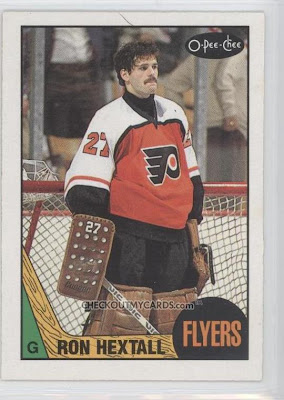1984 Olympic Hockey, Underdog Canada vs. USA
Less than 24 hours before the first game of the 1984 Olympics, Canadian goaltender Mario Gosselin was under the impression that he would not be allowed to compete. The problem was that two years prior, Gosselin had dressed as back-up for John Garrett of the NHL's Quebec Nordiques due to an injury to Dan Bouchard. At the time, Gosselin was a member of the Quebec Junior League's Shawinigan Cataractes having been drafted by the Nordiques in the third round of the 1982 draft. Although he never got into the game with the Nords, just prior to the Olympics it was believed this was enough to disqualify him from amateur status.
Gosselin went to bed the night before the first game against the defending Gold medalist USA still thinking he was ineligible. He was awoken in his room after midnight by someone saying he was wanted on the telephone. "It was a Quebec talk show. The guy on the line said, 'Mario, you're playing. It's all been cleared up.' It was", Gosselin was quoted afterward. The International Olympic Committee had declared that any player who had played one game in the NHL was not considered an amateur and therefore ineligible for Olympic play. Gosselin had officially not played a game in the NHL.
Although Gosselin and teammate Dan Wood were deemed acceptable, Canada lost Centre Mark Morrison and Defenseman Don Dietrich who had previously played nine and six games in the NHL respectively. The decision also turfed Italian goalie Jim Corsi and his teammate Rick Bragnolo as well as Austrian Greg Holst. Amazingly however, Austrian player Rick Cunningham who had played 323 games in the World Hockey Association was indeed eligible to play.
Either way, going into the opener Canada was a heavy underdog against the United States. Not only were the Americans the defending Olympic champions, but they held a 5-4-3 record against Canada in exhibition play. Overall in pre-Olympic play the U.S. had gone 39-18-8 while Canada went 18-29-10. Canada's poor record was the result of going 2-16-1 in their last 19 exhibition games. Canadian coach Dave King stated,"We've struggled most of the year. We've worked hard to be competitive. The Americans have been a little inconsistent. To beat them, we have to execute very well."
And that they did. a mere 27 seconds into the game, Pat Flatley tipped a Carey Wilson shot past U.S. goaltender Marc Behrend. David A. Jensen tied it up halfway through the first before Wilson regained the lead less than two minutes later. Although it was only 2-1, Canada had out shot the U.S. 13-6 causing American coach Lou Vairo to say post game, "The first goal was a very strong psychological factor, after that it seemed we were skating uphill all day."
Carey Wilson made it 3-1 two minutes into the second before Jensen responded again. The Canadians managed to suppress the threat of the American's biggest threat Pat LaFontaine. As Michael Farber of The Montreal Gazette described after the game,"Dave Tippett wore LaFontaine like a boutonniere" with his tight checking. Tippett also beat the U.S star on 13 of 17 faceoffs they took. The Americans did manage to pepper 18 shots at Gosselin in the middle frame, as the Canadian goaltender stood on his head.
"I think the whole eligibility thing helped us more than anything else," Gosselin said afterward. Vairo seemed to concur, "I don't think it had any effect on us, but it might have worked in favour of Canada." Wilson completed his hat-trick in the middle of the third as Gosselin held the fort for the 4-2 victory turning aside 34 of 37 shots.
With the loss the Americans were all but assured of not being able to defend their Gold from 1980 and Canada looked forward to a game with the Austrians two days later.








Comments